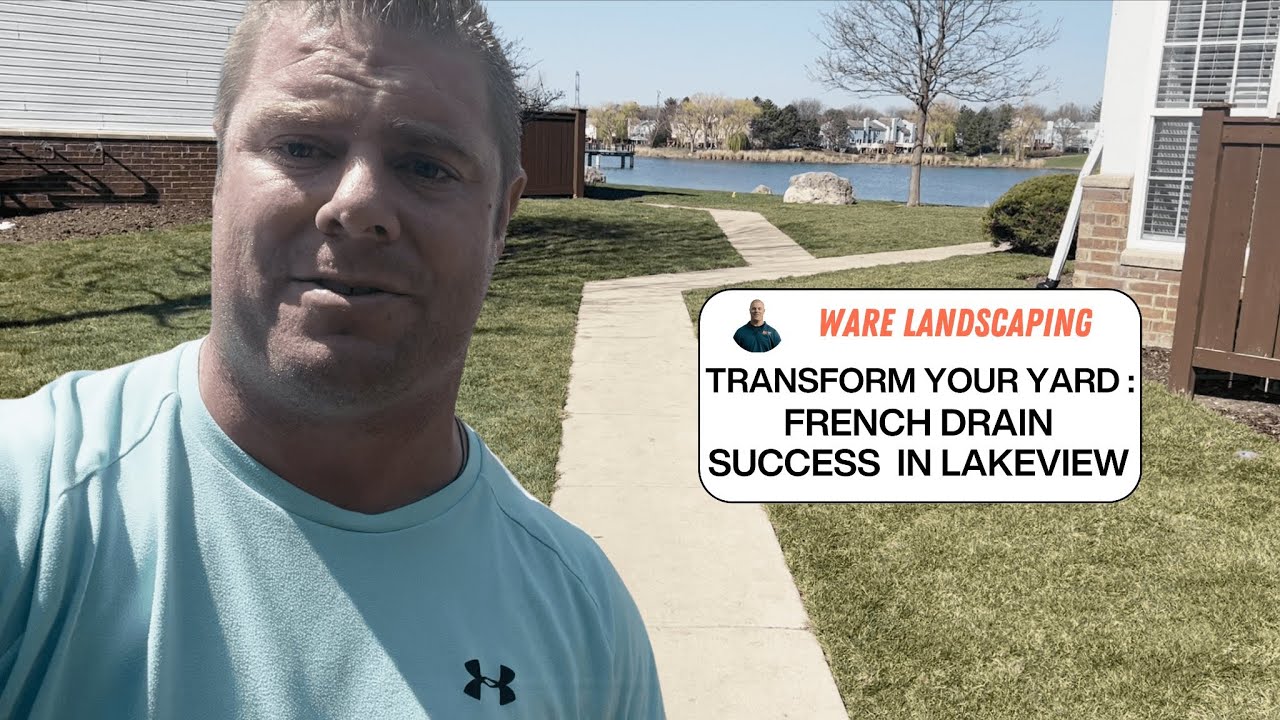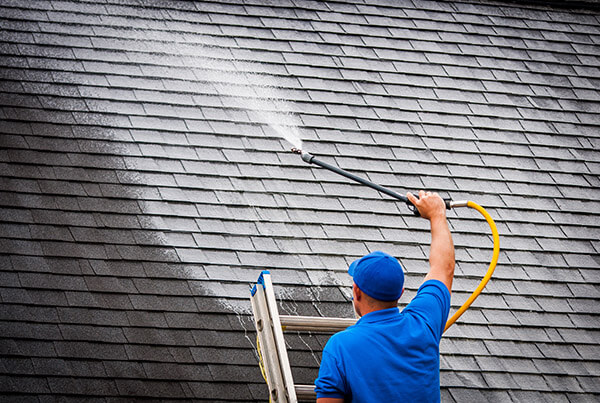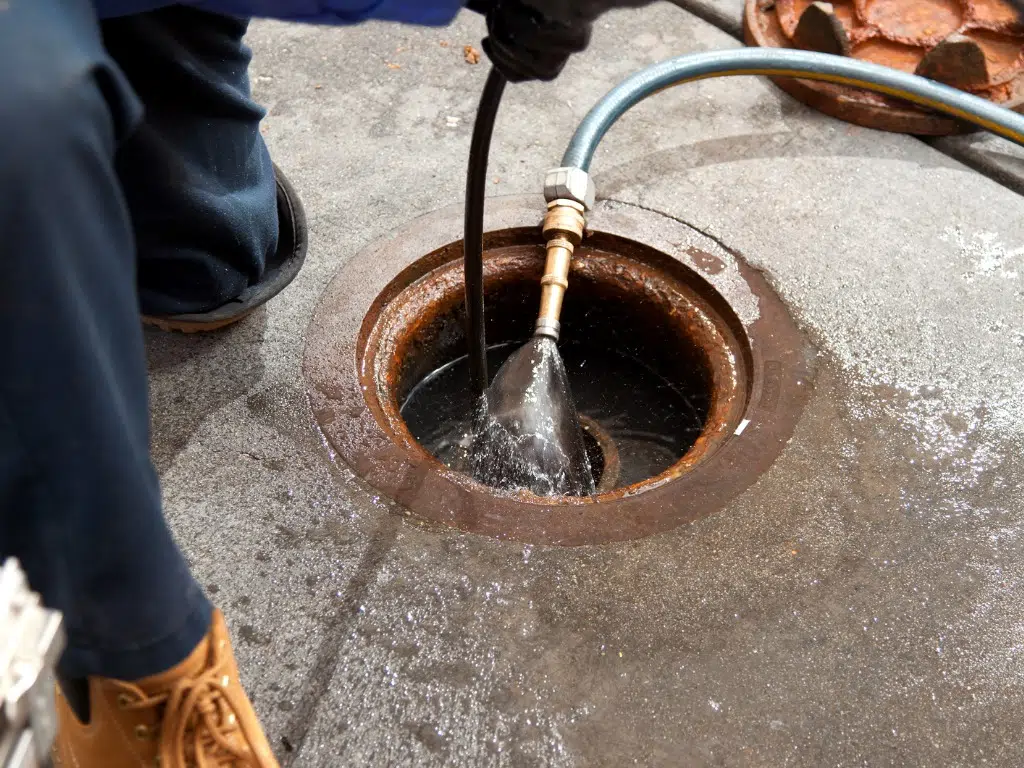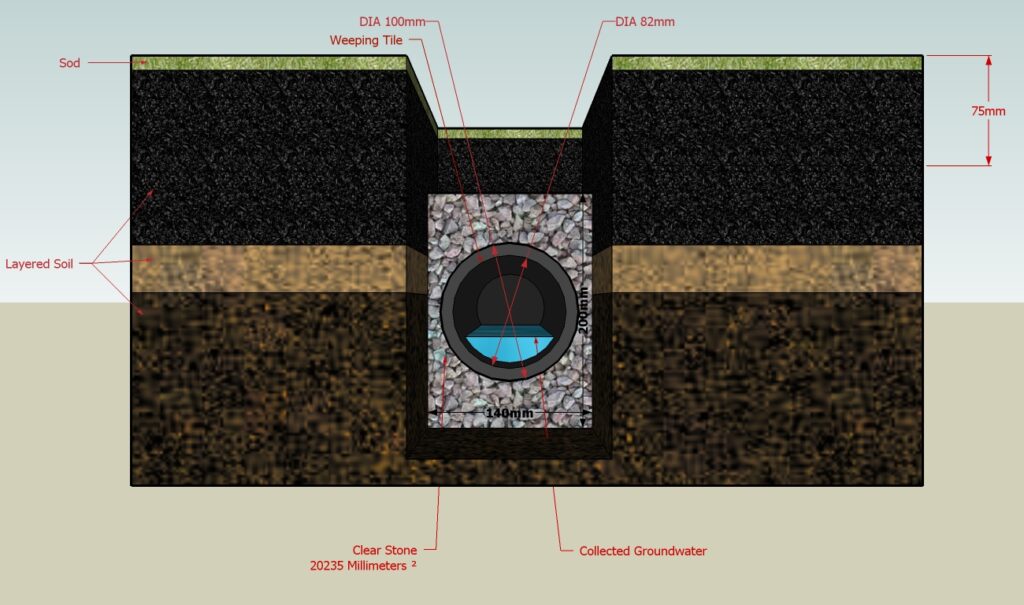Are you tired of soggy yards and icy sidewalks? Many property owners in Naperville face common issues like standing water and dangerous ice buildup. These problems aren’t just unsightly; they can cause significant damage and create safety hazards. Fortunately, French drain systems offer a comprehensive fix, transforming problem areas into functional and attractive spaces.
The High Cost of Water Damage
Unresolved water pooling brings a hefty price tag. Beyond the annoyance of a wet yard, persistent moisture can wreak havoc on your property’s foundation and landscaping. In Naperville, one commercial property had to replace all its concrete because pooling water caused serious issues. This is a clear example of how neglecting drainage can lead to expensive repairs and safety concerns, especially with ice forming on walkways.
Introducing the French Drain Solution
A French drain is a simple yet highly effective system designed to manage excess water beneath the surface. It’s essentially a trench filled with gravel and a perforated pipe that collects and redirects groundwater away from your home or business. This system tackles drainage problems at their root, preventing the surface issues that plague many properties.
Understanding French Drain Systems
French drain systems work by intercepting subsurface water and guiding it to a suitable outlet. They are a proven method for keeping properties dry and safe, regardless of the season. Let’s explore how these systems are constructed and why they are so effective.
How French Drains Work
The core of a French drain is a trench dug at a slight slope. Inside the trench, a layer of gravel surrounds a perforated pipe. This pipe has small holes that allow water to enter. A filter fabric wraps the gravel and pipe, preventing soil and debris from clogging the system. As water seeps into the ground, it enters the pipe, flows downhill, and is directed away from the property, often to a storm sewer or a low-lying area.
Key Components of an Effective System
-
Collection Basins (Catch Basins)
Catch basins, also known as sumps or inlets, are crucial collection points within a French drain system. These are typically 6-inch C catch basins, placed about every 20 feet in areas where water is likely to accumulate. They act as a first line of defense, capturing leaves and other debris before they can enter the perforated pipe. This keeps the system clear and functioning optimally, ensuring water can be efficiently channeled away.
-
Perforated Pipe and Gravel
The perforated pipe is the backbone of water collection. It lies at the bottom of the trench, ready to receive water that enters through the gravel. The gravel surrounding the pipe serves a dual purpose: it filters the water and provides a permeable pathway for it to reach the pipe. In Naperville projects, sod is often preferred over river rock for covering the drain. Grass acts as a better conductor for the water, and it helps prevent weeds that commonly grow through river rock, keeping the area tidy.
-
Tie-ins for Downspouts
Roof runoff is a major contributor to yard saturation. French drain systems effectively manage this by tying in downspouts directly. This ensures that water from your roof is immediately directed into the drainage system rather than pooling around your foundation. Filters are often added to these tie-ins to prevent debris from entering the French drain, maintaining the system’s efficiency and longevity.
Naperville French Drain Project: A Case Study
We recently completed a commercial project in Naperville that perfectly illustrates the power of a well-designed French drain system. This property faced significant challenges with standing water and ice, but the transformation is remarkable.
Addressing Persistent Water and Ice Issues
Before our intervention, this Naperville commercial property had “massive ice issues.” Sitting water was a constant problem, creating unsafe conditions and safety concerns for everyone on the premises. The pooling water also contributed to the deterioration of the property’s concrete surfaces.
The Transformation: Grading, Sodding, and Drainage
The project involved a comprehensive approach to drainage. We regraded the entire property, creating subtle slopes that guide water towards the French drains. This strategic grading ensures that water naturally flows into the system.
Strategic Grading for Water Flow
We made sure the ground slopes gently towards the French drains. This slight dip ensures that any surface water is directed into the intended collection points. When French drains are at the lowest points, they work at their best potential.
The Role of Sod in Drainage
After installing the French drains, we finished the project with sod. The sod not only enhances the property’s appearance but also plays a role in channeling water into the drainage system. Grass is an excellent conductor for surface water, helping to move it efficiently into the French drains.
Visible Results and Client Satisfaction
The results speak for themselves. A resident on-site remarked that the difference was “night and day.” The property now looks significantly improved, with lush, well-drained areas resembling a golf course. All the water is now being managed effectively underground, eliminating the previous ice and water problems.
Design and Installation Best Practices
Installing a French drain system requires careful planning and execution to ensure maximum effectiveness. Proper design and installation are key to a successful outcome.
Strategic Placement is Crucial
The location of your French drains is paramount. They must be installed at the natural low points of the property. If a drain isn’t situated where water naturally collects, it simply won’t function as intended. Improper placement means the system can’t work to its full potential.
Proper Outlet for Collected Water
Collected water needs a place to go. Ideally, the French drain system should connect to a storm sewer, which provides the best outlet. Alternatively, water can be directed to a pond or a natural low-lying area on the property. The Naperville project successfully connected to a storm sewer, ensuring all water is efficiently removed from the site.
Material Efficiency and Cost-Effectiveness
When installing French drains, smart material management can save money. Instead of paying to haul away excavated dirt, it can be reused and respread on the property. This saved cost can then be invested in sod or other landscaping improvements, offering a better “bang for your buck.”
Benefits Beyond Drainage
French drain systems offer advantages that go far beyond simply removing standing water. They contribute significantly to the overall health and appeal of your property.
Enhanced Property Aesthetics
By regrading and sodding, the visible improvement to the property is dramatic. The once problematic areas are now attractive and functional. The hidden drainage system works in harmony with the landscaping, creating a more beautiful and usable outdoor space.
Preventing Costly Future Repairs
Investing in a French drain system is a preventative measure against expensive future repairs. It stops the cycle of water damage that can ruin concrete, damage foundations, and necessitate costly replacements. Addressing drainage issues early saves money in the long run.
Safety and Usability Improvements
Eliminating standing water and the dangerous ice it creates drastically improves property safety. Sidewalks and pathways become safer to use, reducing the risk of slips and falls. Your property becomes more accessible and enjoyable year-round.
French Drainage Solution
Conclusion: A Superior Drainage Solution
French drain systems provide a robust and effective solution to persistent water drainage problems. They are a vital investment for any property owner looking to enhance safety, improve aesthetics, and prevent costly future damage.
Key Takeaways for Naperville Property Owners
Remember that proper grading, strategic placement at low points, and effective integration of components like catch basins and downspouts are essential. Ensuring a clear outlet for the collected water is also critical for the system’s success.
Invest in Your Property’s Health and Safety
A well-installed French drain system is a long-term investment. It safeguards your property’s value, ensures safety, and significantly improves its overall usability. Consider a French drain system to finally solve your Naperville property’s drainage woes.








